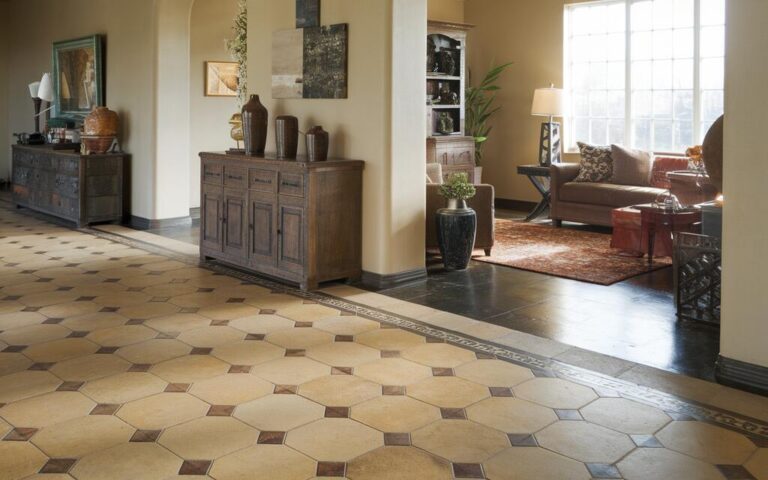In this blog, I’ll reveal the game-changing secrets to transforming your ceramic tile floors from dull to dazzling. Whether you’re tackling an outdated bathroom or giving your kitchen a budget-friendly refresh, the right paint choice makes all the difference between professional results and DIY regret.
After extensive testing and research, I’ve narrowed down the best paint options that truly deliver – from heavy-duty epoxy formulas to specialized ceramic coatings that bond seamlessly with your tiles. No more living with those dated terra cotta floors or cringe-worthy 90s patterns.
I’ll guide you through selecting the perfect paint and share pro tips to ensure your newly painted tiles maintain their beauty for years to come. Get ready to create a stunning floor transformation that looks like it costs thousands while keeping your budget firmly intact.
Which Paint Delivers Best Results on Ceramic Tile Floors?
Here are some high-quality paint options for ceramic tile floors, along with specific shades and brand codes:
1. Epoxy Paint
Rust-Oleum RockSolid® Polycuramine Tile & Floor Paint
- Shade: Smoke Gray – 285143
- Shade: Mocha Brown – 285144
Behr Premium 1-Part Epoxy Concrete & Garage Floor Paint
- Shade: Slate Gray – 902
- Shade: Tan – 901
Epoxy paint is a highly durable, moisture-resistant coating that bonds tightly to surfaces, creating a tough, long-lasting finish. Its resin-hardener formula enhances adhesion, making it more resistant to wear, stains, and heavy foot traffic compared to regular paint.
The glossy, seamless finish adds a professional look to any space. Using epoxy paint on ceramic tile floors is a cost-effective way to refresh outdated tiles without replacing them.
Its waterproof, stain-resistant, and easy-to-clean properties make it ideal for kitchens, bathrooms, and high-traffic areas. With proper application, epoxy ensures a durable and low-maintenance flooring solution.
2. Acrylic Latex Paint
- Benjamin Moore Floor & Patio Low Sheen Enamel
- Shade: Rockport Gray – HC-105
- Shade: White Dove – OC-17
- Sherwin-Williams Porch & Floor Enamel
- Shade: Iron Ore – SW 7069
- Shade: Greek Villa – SW 7551
Acrylic latex paint is a water-based, flexible, and easy-to-apply paint option that adheres well to various surfaces, including ceramic tiles when paired with a high-adhesion primer. It dries quickly, has low odor, and is available in a wide range of colors, making it a popular choice for DIY flooring projects.
While not as tough as epoxy, it provides a smooth, matte to semi-gloss finish that works well in low- to medium-traffic areas. Using acrylic latex paint on ceramic tile floors is an affordable way to update outdated flooring without the need for expensive replacements.
It offers a simple application process and is great for spaces like bedrooms, offices, and living rooms where heavy wear isn’t a major concern. For added durability, sealing with a clear polyurethane topcoat helps protect the finish and extend its lifespan.
3. Chalk Paint
- Annie Sloan Chalk Paint
- Shade: Graphite – (Deep charcoal black)
- Shade: Old White – (Soft, warm white)
- Rust-Oleum Chalked Ultra Matte Paint
- Shade: Charcoal – 285143
- Shade: Linen White – 285140
Chalk paint is a versatile, matte-finish paint known for its easy application and vintage, distressed look. It adheres well to most surfaces without extensive prep work, making it a great option for DIY projects.
While it lacks the durability of epoxy or acrylic latex, it provides a soft, velvety texture that works well for decorative or lightly used areas. Using chalk paint on ceramic tile floors is ideal for achieving a rustic, farmhouse, or shabby-chic style without the need for stripping or sanding.
It’s best suited for low-traffic areas like bedrooms and decorative spaces. To improve durability, applying a clear wax or polyurethane sealant helps protect the finish and prevent chipping.
4. Porch and Patio Floor Paint
- Valspar Porch, Floor & Patio Paint
- Shade: Gray Granite – 82042
- Shade: Pure White – 7002-7
- Behr Premium Porch & Patio Floor Paint
- Shade: Pacific Fog – PFC-62
- Shade: Deep Terra Cotta – PFC-10
Porch and patio floor paint is a durable, weather-resistant coating designed specifically for floors exposed to foot traffic and outdoor elements. It typically comes in acrylic latex or epoxy-based formulas, providing a smooth, slip-resistant finish that withstands wear, moisture, and UV rays.
This makes it an excellent choice for both indoor and outdoor tile surfaces. Using porch and patio floor paint on ceramic tile floors is a great way to enhance durability while maintaining a fresh, polished look.
It’s ideal for covered patios, sunrooms, and indoor spaces where a tough, long-lasting finish is needed. With built-in weather resistance and easy application, this paint option is a practical choice for homeowners looking for low-maintenance, high-performance flooring.
Best Paint for Ceramic Tile Floors
Epoxy paint is the best choice for ceramic tile floors due to its superior durability, moisture resistance, and long-lasting finish. It forms a hard, glossy, and seamless surface that withstands heavy foot traffic, stains, and daily wear. Its resin-hardener formula ensures strong adhesion, making it less likely to peel or chip compared to other options.
It is ideal for high-traffic areas like kitchens, bathrooms, and entryways, where durability is a top priority. Unlike chalk or acrylic latex paint, which require additional sealing for protection, epoxy offers built-in strength and water resistance. While it requires proper surface preparation and curing time, the long-lasting results make it the best investment for transforming ceramic tile floors.
How to Apply the Best Paint for Ceramic Tile Floors
Here are the 7 steps Guide:
- Clean the Surface Thoroughly
- Scuff the Tiles for Better Adhesion
- Apply a High-Quality Bonding Primer
- Apply the Paint in Thin, Even Layers
- Apply Additional Coats for Full Coverage
- Seal the Paint for Protection
- Allow Proper Curing Time Before Use
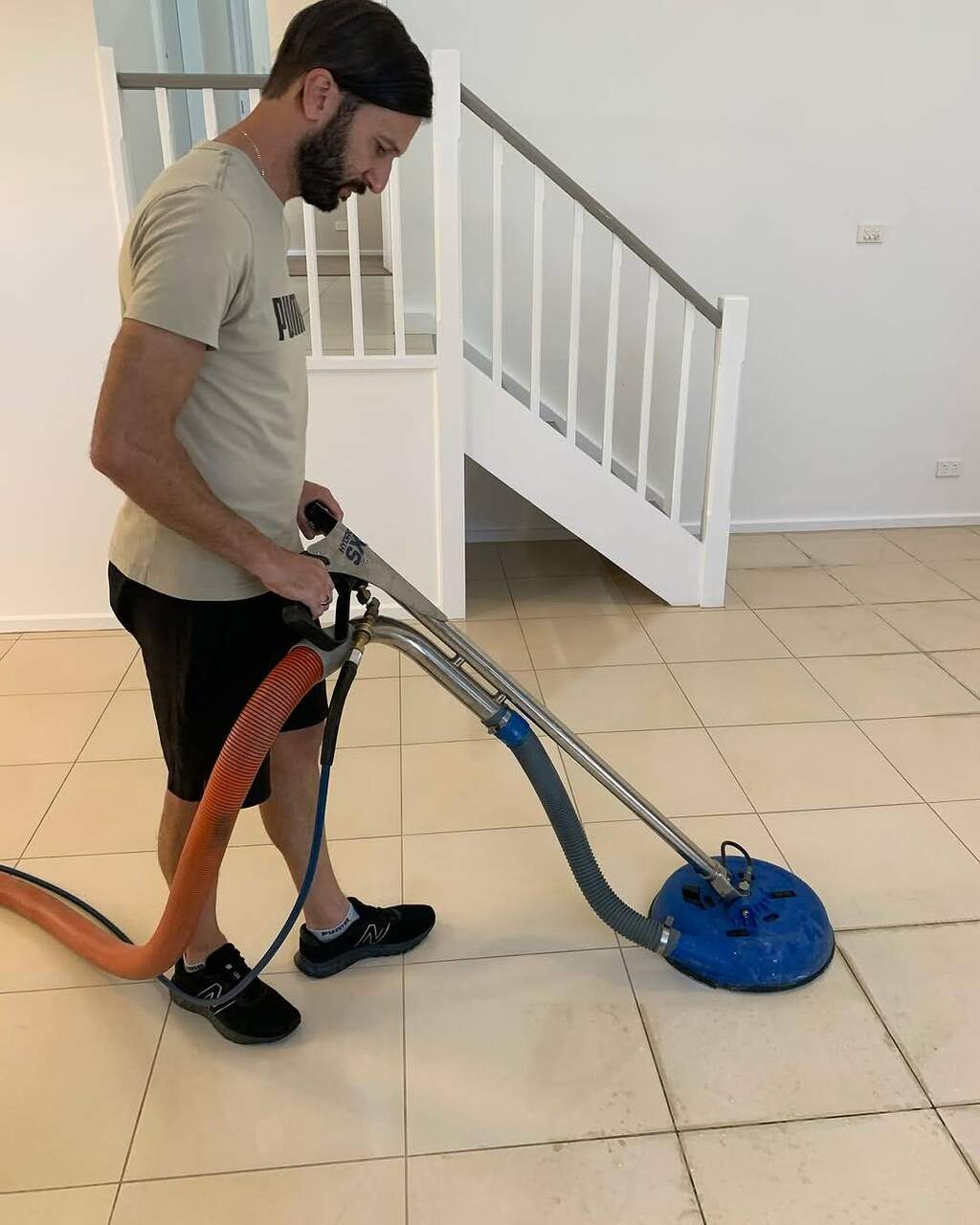
Start by removing dust and debris, then scrub the tiles with a degreaser or TSP cleaner to eliminate grease and grime. Rinse well and let the floor dry completely before proceeding.
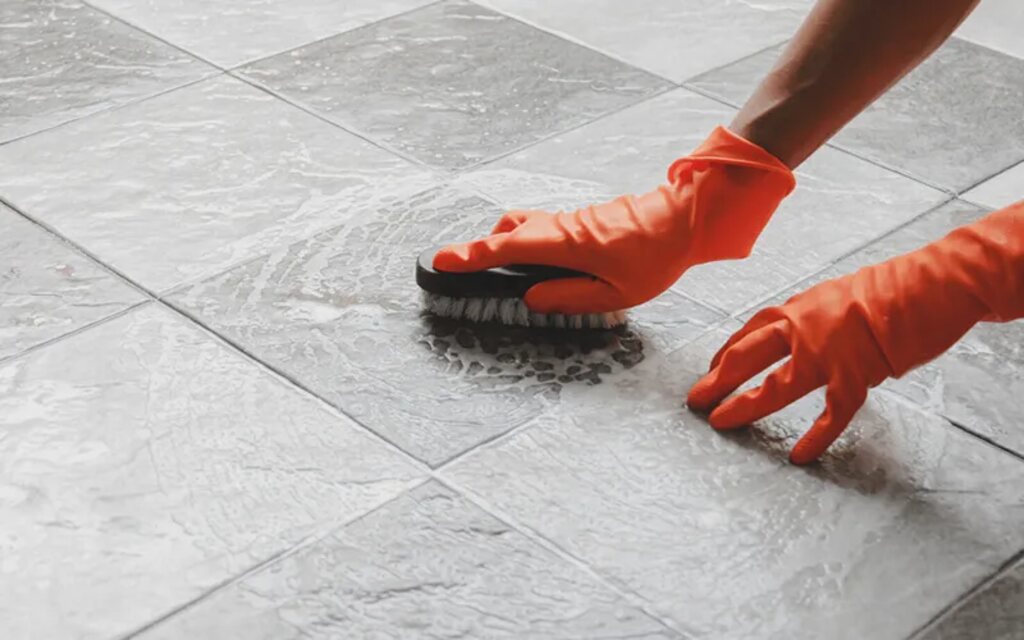
Lightly sand the tiles with 220-grit sandpaper to create a rough texture that helps the paint adhere. Wipe away any dust with a damp cloth.
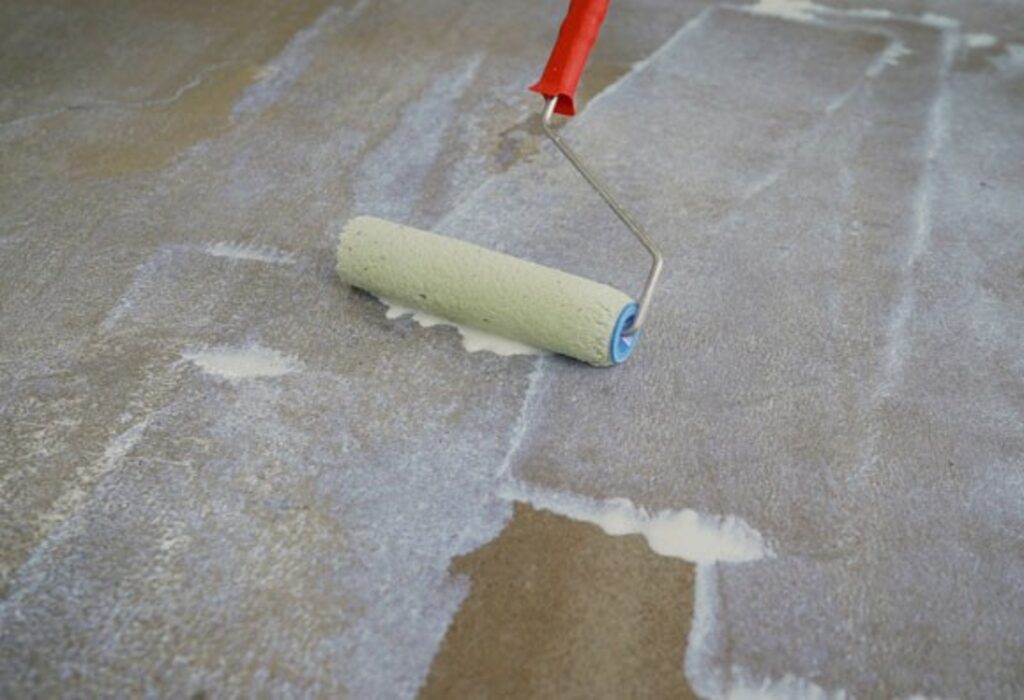
Use a primer designed for glossy surfaces, such as KILZ Adhesion or Zinsser Bulls Eye 1-2-3. Apply a thin, even coat with a foam roller and let it dry for at least 24 hours.
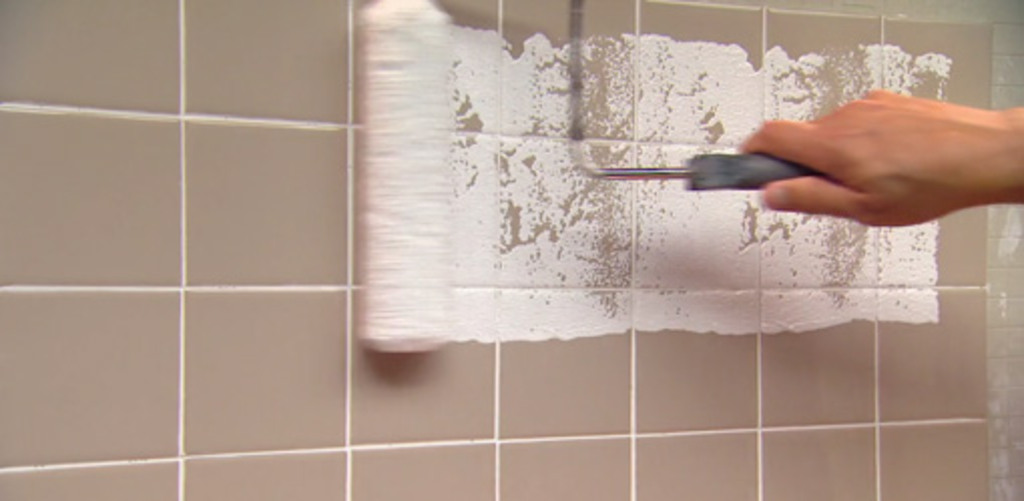
Choose durable paint like epoxy, acrylic latex (with primer), or porch and floor paint. Use a high-quality roller for smooth application and a brush for edges and grout lines. Let each coat dry fully before adding another.
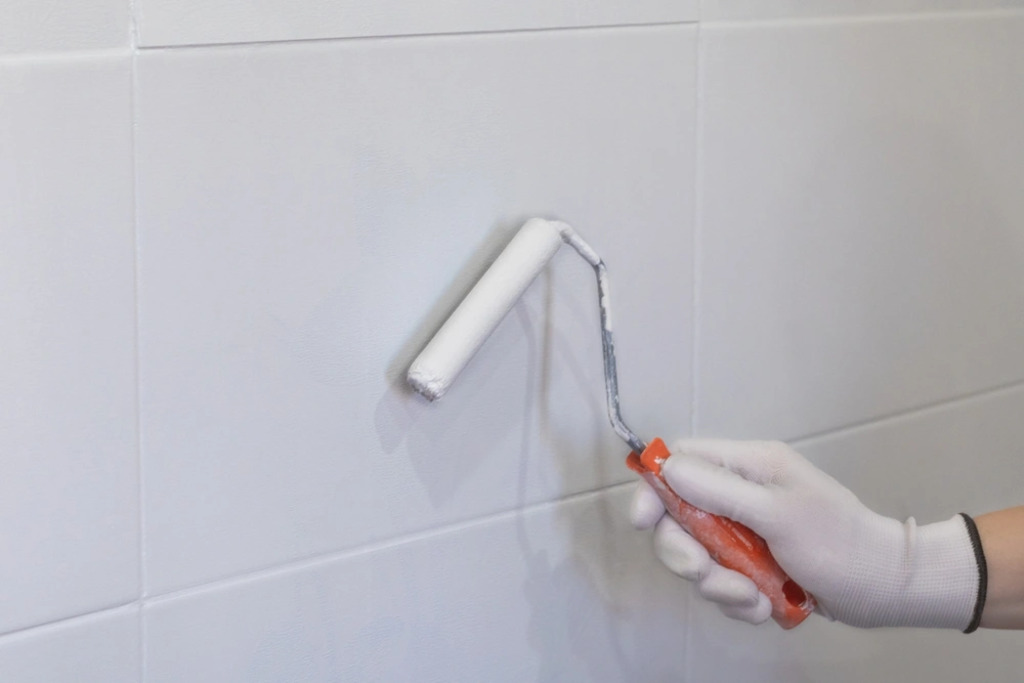
For a uniform finish, apply at least two to three coats, allowing proper drying time between each. Lightly sand between coats for a professional look.
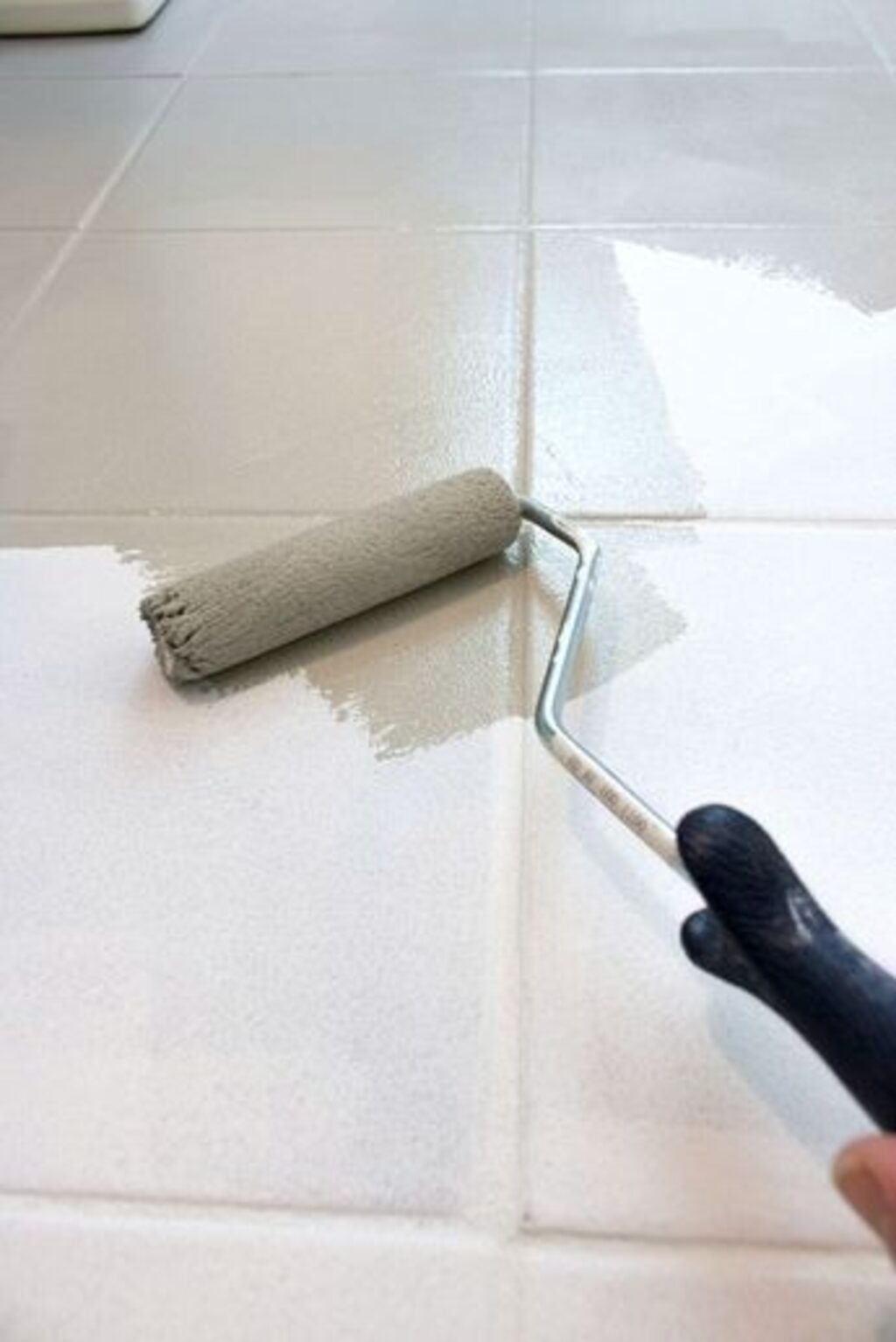
Use a clear polyurethane or polyacrylic sealer to protect against moisture and wear. Apply two to three thin coats with a roller, letting each coat dry thoroughly.
Let the floor dry for 24–72 hours before walking on it and at least a week before placing heavy furniture. Avoid mopping for 10–14 days to allow the paint to harden completely.
Tips for Best Results:
- Work in a well-ventilated area to reduce fumes.
- Use high-quality paint and tools for a smooth, even finish.
- Stick to neutral colors like gray, white, or beige for a timeless look.
- Avoid excessive water exposure—even sealed paint may wear down over time.
Should you Paint Your Ceramic Tile Floor?
Painting a ceramic tile floor is an affordable and practical way to give your space a fresh, updated look without the need for a full replacement. Over time, tile colors and designs can become outdated, making a room feel old or mismatched with your current décor.
Instead of going through the costly and labor-intensive process of removing and replacing tiles, painting offers a budget-friendly alternative that allows for complete customization. Whether you want a sleek, modern finish, a rustic distressed look, or a bold pattern, the right paint can transform your floor to match your style.
Beyond aesthetics, painting ceramic tile can also help conceal minor imperfections like surface scratches, stains, or discoloration. With the proper preparation and sealing, a painted tile floor can also provide a layer of protection against daily wear and tear, extending the life of the flooring.
This makes it an excellent option for areas like bathrooms, kitchens, and laundry rooms where a fresh, clean look is desired without major renovations. While painting tile isn’t a permanent solution like new flooring, it’s a great way to refresh a space quickly and cost-effectively.
Conclusion
Painting ceramic tile floors is a cost-effective and stylish way to refresh your space without the hassle of a full renovation. By choosing the right paint type, properly preparing the surface, and sealing it for durability, you can achieve a long-lasting and visually appealing finish.
Whether you prefer neutral tones for a timeless look or bold colors for a statement floor, selecting high-quality products ensures the best results. While painted tiles may require maintenance over time, they offer a budget-friendly and customizable solution to updating your home. With proper care, a painted tile floor can remain beautiful and functional for years.
FAQs
Does ceramic tile paint peel off?
Yes, tile paint can peel off if the surface is not properly prepared or if the wrong type of paint is used. Factors that cause peeling include inadequate cleaning, skipping sanding, using low-quality paint, or failing to apply a bonding primer. High-moisture areas, such as bathrooms and kitchens, can also contribute to peeling if the paint is not sealed correctly.
To prevent peeling, thoroughly clean and sand the tiles, use a high-quality bonding primer, apply durable tile or floor paint, and finish with a clear polyurethane or polyacrylic sealer. Allowing proper curing time before use is also essential for a long-lasting finish.
Is it a good idea to paint floor tiles?
Painting floor tiles can be a good idea if you want an affordable and easy way to refresh your space without the expense and hassle of replacing the tiles. It allows you to update outdated colors, cover minor imperfections, and customize your flooring to match your style. When done correctly with proper surface preparation, high-quality paint, and a protective sealer, painted tiles can last for several years.
However, painted tiles may not be as durable as professionally installed flooring, especially in high-traffic or moisture-prone areas. Over time, wear and tear can cause chipping or peeling, requiring touch-ups. If you’re looking for a temporary or budget-friendly update, painting tiles is a great option, but for long-term durability, replacing them may be a better investment.
What paint is best for floor tiles?
The best paint color for floor tiles depends on your style and space, but here are some versatile and timeless options:
- Classic Neutral: Sherwin-Williams Repose Gray (SW 7015)
- Crisp White: Benjamin Moore Chantilly Lace (OC-65)
- Deep Charcoal: Behr Carbon (N520-7)
- Warm Beige: Farrow & Ball Elephant’s Breath (No. 229)
- Soft Blue: Dulux Denim Drift

